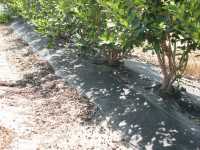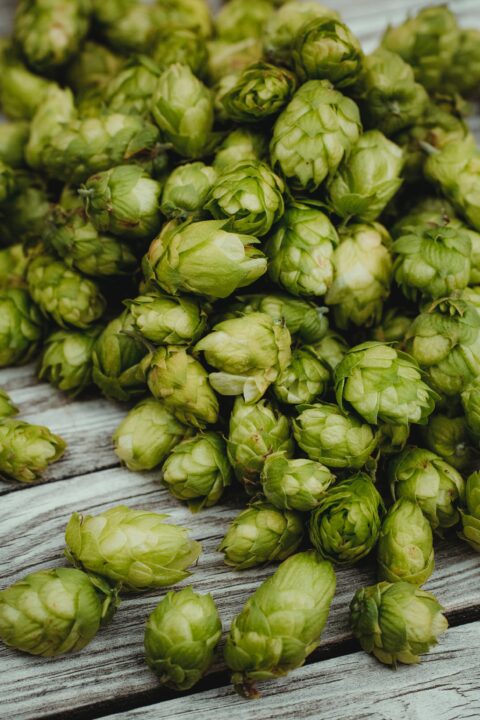Get Wise To Blueberry Water Use

Florida’s commercial blueberry production has increased rapidly during recent years. The latest reported data from the USDA-NASS put bearing acreage in the state at roughly 4,500 acres. When new, non-bearing plantings are included, the acreage is considerably greater.
Development of the southern highbush blueberry (SHB) began at the University of Florida in the 1950s. The resulting cultivars grown today comprise essentially all of the commercial acreage in Florida. While SHB cultivars are well adapted to Florida’s warm subtropical climate, they are generally shallow-rooted and susceptible to periodic drought stress if not properly irrigated. Moreover, SHB have specific soil requirements needed to maintain healthy plantings. Well-drained, porous soils that are acidic and have a minimum soil organic matter content of 4% are considered suitable. Most of Florida soils do not meet these criteria and must be modified for commercial blueberry production. A common approach is to increase soil organic matter by adding pine bark to the field prior to planting. Pine bark may be added on top of the existing soil (pine bark beds), or incorporated into the soil prior to planting (more common today). While these soil conditions can promote healthy growth of SHB, they retain less available soil moisture at field capacity than finer textured soils which adds to the challenge of proper irrigation management in Florida blueberry fields.
Pressure Points
Recent UF/IFAS research characterized water use of mature blueberry plants throughout the year. Non-weighing lysimeters were used to estimate plant water use during approximate weekly intervals and these data were averaged together to estimate daily plant water use for each month. Beginning with the spring growth flush, water use increased rapidly as day lengths and temperatures increased and as canopies developed during the spring. High water use during May corresponded with a critical period of rapid fruit growth and ripening when temperatures are warm and rainfall is usually low in Florida. Water use declined briefly in June immediately following partial canopy removal as a result of summer pruning. As plant canopies regrew following summer pruning, water use steadily increased throughout the summer and peaked during September when canopies were fully re-established and evaporative demand was high. Water use declined during fall and winter as temperatures dropped and day lengths shortened. However, some water use was still evident throughout the winter months.
The actual amount of water used by blueberry plants will vary with many factors including canopy size and shape, cultivar, growth stage, and many environmental conditions including temperature, solar radiation, wind, day length, and humidity. In this study, mature Emerald plants approximately 55 to 60 inches tall (before pruning) and spaced three feet in the row were used. The plants were healthy, high yielding, and well-irrigated so that low soil moisture did not limit water uptake. The monthly averages for daily water use per plant ranged from approximately ½ gallon for February to approximately 2 gallons for September. However, the actual daily water use probably varied substantially from the calculated monthly averages depending on variation in day to day weather conditions.
Follow The Flow
Many new blueberry plantings in Florida are irrigated using low-volume systems with overhead sprinklers for freeze protection. Two drip irrigation lines per plant row is common. While low-volume irrigation systems are generally considered more efficient than overhead sprinklers, careful management is necessary to accommodate the shallow SHB root system and the relatively low water holding capacities of pine bark amended sandy soils. During periods of high water demand and low rainfall, daily (or multiple per day) irrigations of short duration may be necessary to minimize drought stress. In porous soils, water from drippers tends to move vertically in the soil profile with limited lateral movement. Irrigation events should be of the duration necessary to wet the soil profile to the depth of the root zone, not below.
Basic knowledge of plant water demand, soil characteristics, and root distribution — combined with monitoring soil moisture status — can increase efficiency of irrigation practices. Florida Automated Weather Network (FAWN) stations are located throughout the state and are a source of information for seasonal changes in relative water demand and other useful weather data.
A more detailed discussion of irrigation scheduling and soil moisture monitoring can be found by reading “Interpretation Of Soil Moisture Content To Determine Soil Field Capacity And Avoid Over-Irrigating Sandy Soils Using Soil Moisture Sensors,” (Zotarelli, et al, Edis.ifas.ufl.edu/ae460), and
“Field Devices For Monitoring Soil Water Content,” (Muñoz-Carpena, Edis.ifas.ufl.edu/ae266). While these articles do not specifically address blueberry production systems, many of the concepts are relevant. The circumstances surrounding SHB production in Florida require attention regarding irrigation scheduling to maximize efficient use of water and minimize plant drought stress as well as nutrient leaching and runoff.
Editor’s Note: The author acknowledges funding from the Southwest Florida Water Management District for the research described herein.









